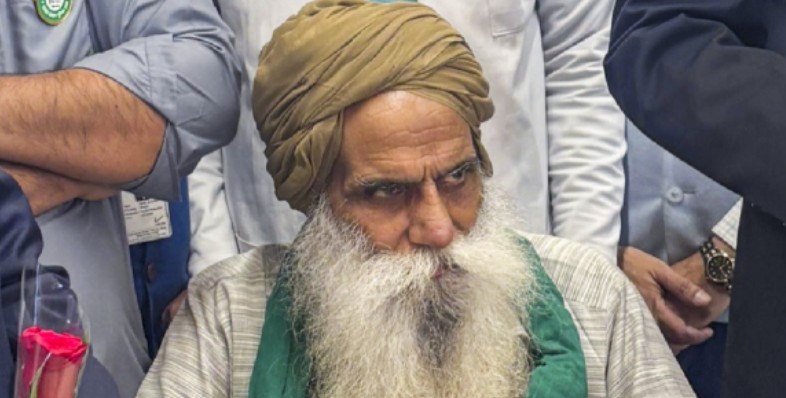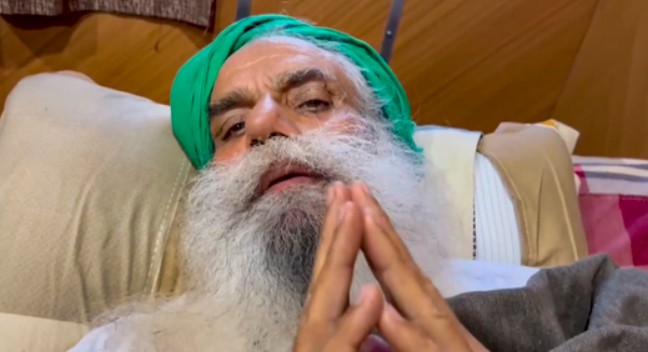Jagjit Singh Dallewal, a prominent Punjab farmer leader and the face of the Samyukta Kisan Morcha (SKM) faction, has officially ended his indefinite hunger strike, bringing to a close a crucial chapter in the ongoing struggle for farmers’ rights in the state. The hunger strike, which had continued for several days, was part of a broader agitation seeking justice for farmers and the implementation of promises made by both state and central governments during earlier protests. His decision to end the fast came after prolonged deliberations and assurances of action by the concerned authorities, as well as growing concerns over his deteriorating health.
Dallewal’s hunger strike was launched with the intention of drawing attention to the unmet demands of Punjab’s farming community. These demands included a legal guarantee on Minimum Support Price (MSP), the fulfillment of compensation promises to families of farmers who died during the 2020–2021 Delhi protests, the withdrawal of cases registered against protestors, and the firm implementation of crop procurement assurances. Over time, these demands have come to symbolize the broader challenges facing Indian agriculture, especially in Punjab, where farming is not just a livelihood but a way of life.
As the days of fasting progressed, concerns about Dallewal’s health grew. Doctors attending to him had issued repeated warnings about his worsening condition. Despite their concerns, the farmer leader had resolved to continue his hunger strike, reflecting the deep-rooted frustration of the farming community. His protest was not just about immediate grievances but also about a legacy of broken promises and administrative inaction that farmers believe they have been subjected to for years.
Dallewal’s hunger strike took place in the context of an ongoing stand-off between farmer organizations and the government. The deadlock has persisted even after earlier agitations—most notably the massive farmers’ protests on Delhi’s borders in 2020 and 2021—that led to the repeal of three controversial farm laws. While the repeal was seen as a major victory, many farmer leaders, including Dallewal, argue that key issues like MSP legalisation and crop insurance reform remain unaddressed. The hunger strike was thus a means to keep pressure on the government and remind the public that farmers’ issues were far from resolved.

Support for Dallewal and his cause poured in from across Punjab and other parts of the country. Various farmer unions, political leaders, and civil society organizations rallied behind him. Mass mobilizations in villages and towns showed that the sentiments of farmers remain intensely aligned with their leaders. Volunteers and fellow protestors camped outside the protest site, providing moral and logistical support throughout the hunger strike.
In recent days, a breakthrough was achieved following talks between the farmer leadership and representatives of the Punjab government. According to sources close to the matter, the government assured that it would soon release compensation to families of deceased protestors, initiate the process to drop pending criminal cases against farmers involved in protests, and review the status of pending MSP demands. These assurances, while not a complete fulfillment of demands, were deemed sufficient by Dallewal and his supporters to consider ending the hunger strike for the time being.
In a public address shortly after breaking his fast, Jagjit Singh Dallewal emphasized that the decision was not a retreat but a strategic pause. He underlined that the protest movement would continue in other forms and that farmers were prepared to escalate their agitation if promises were not met. He thanked the medical staff who monitored his health, the volunteers who supported him, and the people of Punjab for their solidarity.
Dallewal also took the opportunity to highlight the broader agricultural distress in the country. He spoke about rising input costs, unpredictable weather patterns due to climate change, the burden of farm debt, and the failure of institutional mechanisms to support small and marginal farmers. He reiterated the call for holistic agricultural reforms and urged the government to engage sincerely with farmer unions to chart a sustainable path forward.
The ending of the hunger strike also puts the spotlight back on the political climate in Punjab, where agricultural issues remain central to public discourse. With state assembly sessions and elections on the horizon, farmer-related concerns are expected to feature heavily in policy discussions. Several opposition leaders have already criticized the delay in addressing farmer demands and have vowed to raise these issues in the legislative arena.
Meanwhile, civil society organizations and academic institutions have begun to analyze the impact of Dallewal’s protest. Many scholars view it as part of a long tradition of Gandhian-style resistance in India—peaceful, persistent, and morally compelling. The hunger strike, though physically demanding and risky, drew significant attention to the cause, both in mainstream media and social media circles, igniting debates about rural equity and governance.
In villages across Punjab, Dallewal’s action has resonated deeply. Farmers see his protest as emblematic of their own struggles—against neglect, against bureaucratic hurdles, and against a system that often seems indifferent to their needs. His decision to fast unto death was seen not just as an act of defiance but as one of sacrifice, and its conclusion with partial gains is being celebrated as a victory of resilience and unity.
As the farmer movement transitions from the hunger strike phase to renewed negotiations and possible legislative activism, the future remains uncertain. But what is clear is that the hunger strike has re-energized the conversation around agriculture in India, putting the spotlight firmly on the plight of the very people who ensure food security for the nation. Jagjit Singh Dallewal’s protest, while temporarily over, has left a lasting imprint on Punjab’s socio-political fabric and is likely to inspire similar movements in the future if promises made are not kept.
In closing, the conclusion of Dallewal’s hunger strike marks a temporary but meaningful step in the long and complex journey of India’s farmers toward justice and recognition. It is a reminder that their voice—grounded in the soil of their fields and strengthened by the unity of their communities—cannot be silenced. As the protest evolves into the next phase, the farming community will watch closely to ensure that this symbolic victory turns into real, lasting change.


